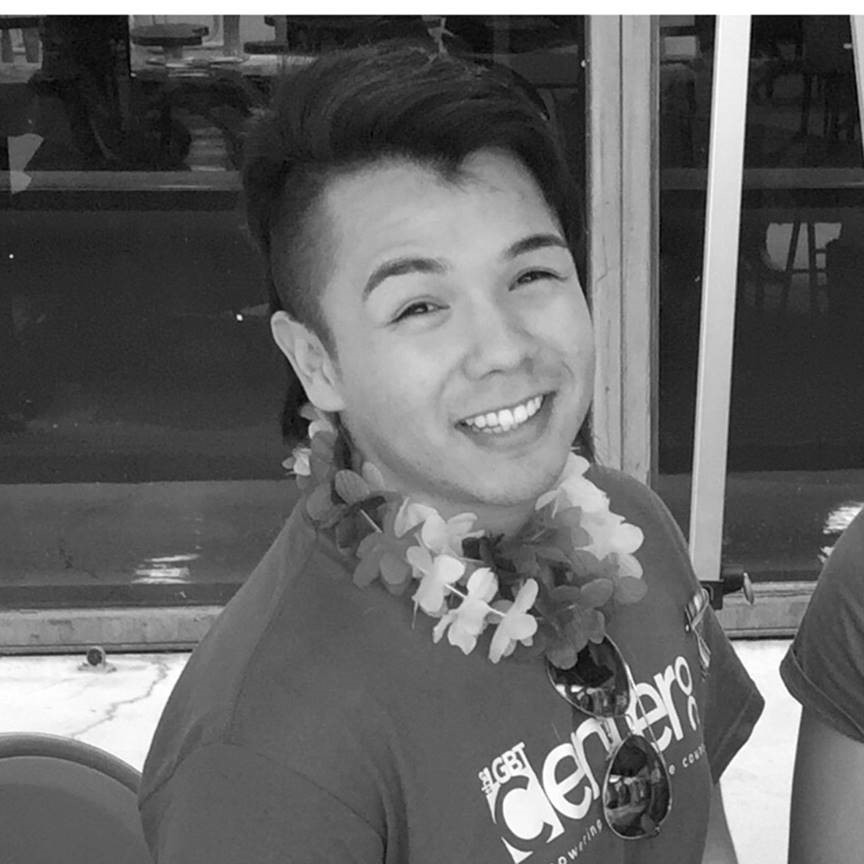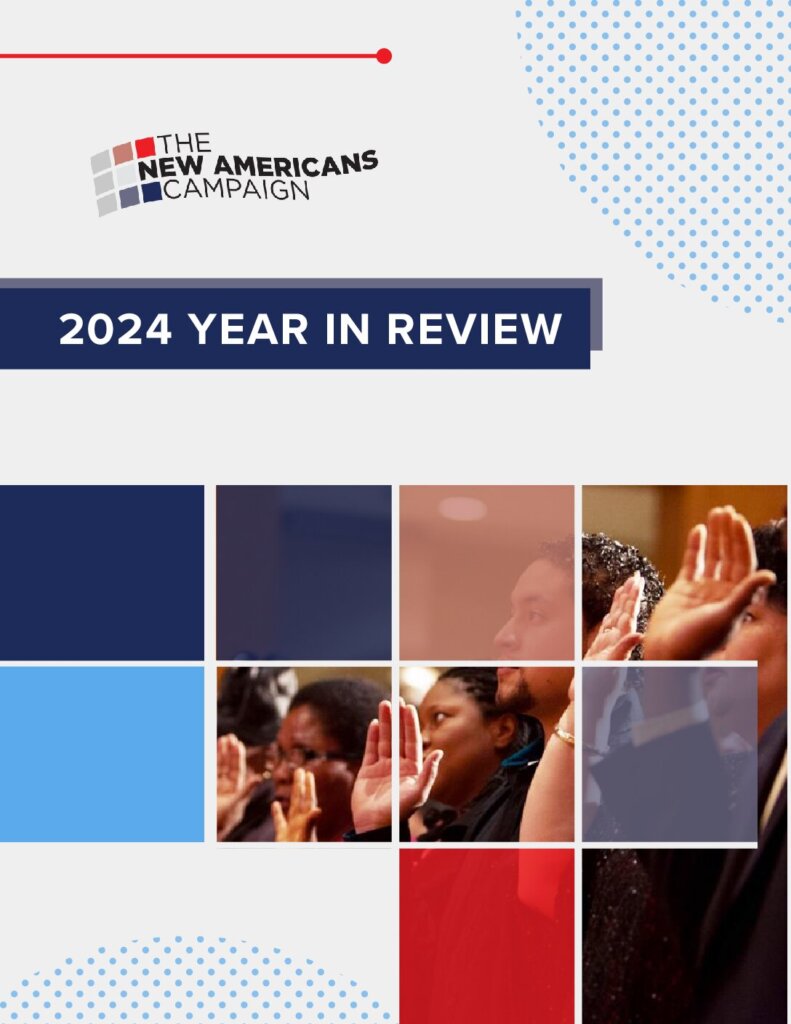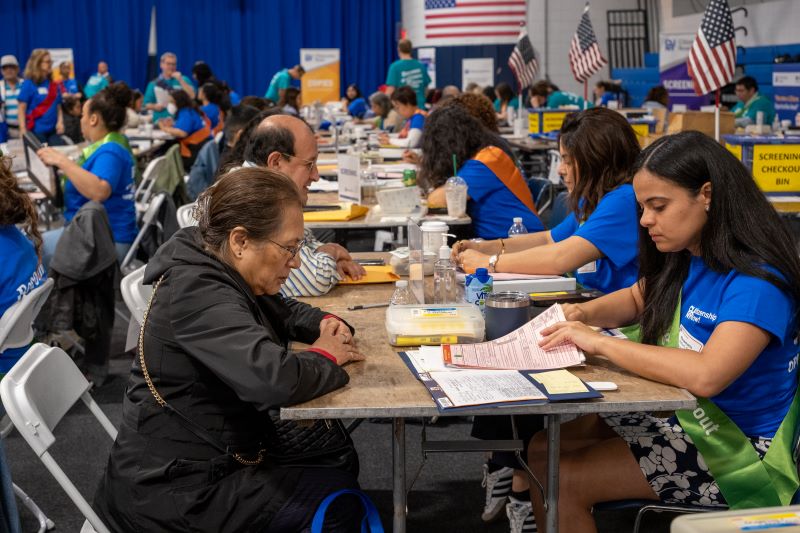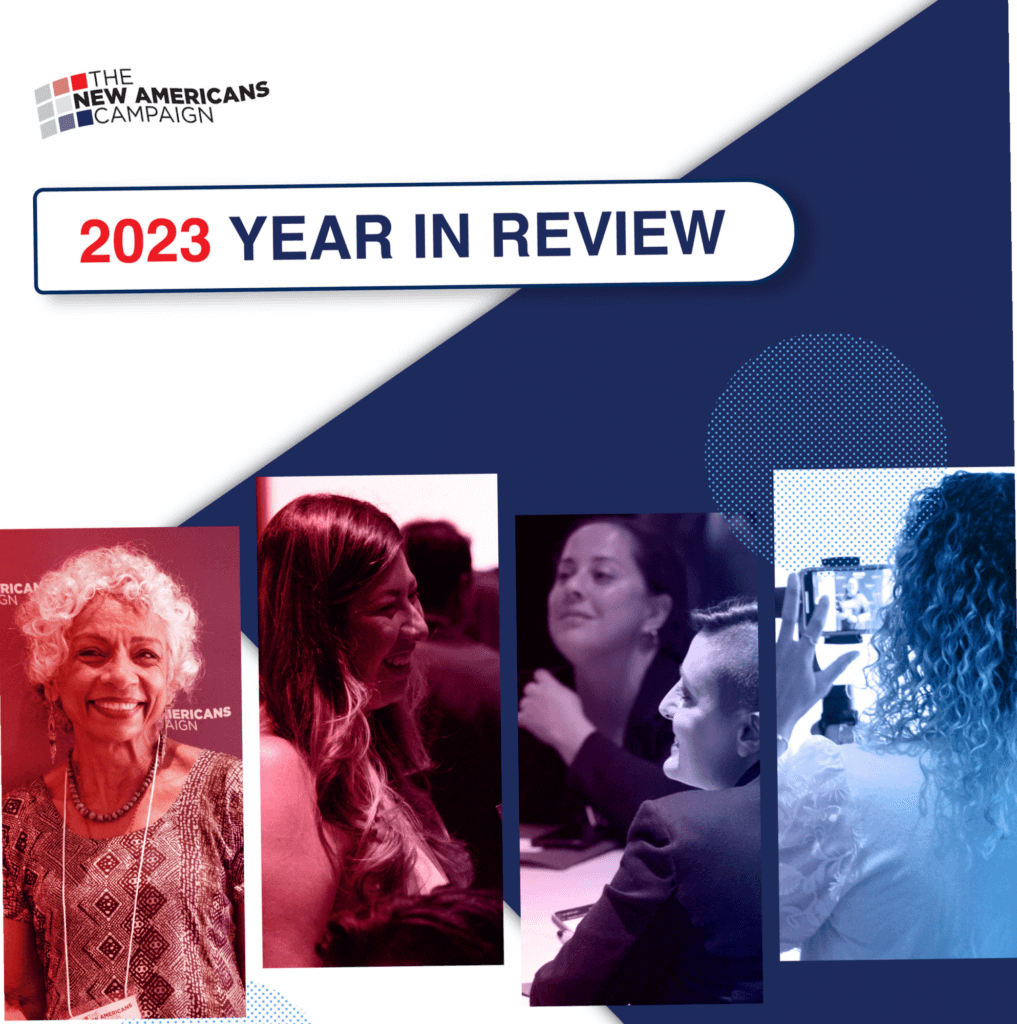The New Workshop Model: If we’re going to send something into space, it has to be simple.

Explore more
The Orange County New
Americans Campaign partners have been developing a new model for large
citizenship group processing workshops that they shared with colleagues from
across the country in August. Noticeably absent from the naturalization
workshop that concluded the New Americans Campaign’s 2019 national conference
were those long, long, lines of waiting attendees. To understand what changed,
we caught up with Jorge Hermosillo, who serves as a Citizenship Coordinator for
OCCORD. We also asked Sarah Letson, Senior Manager of Innovation & Learning
for the New Americans Campaign, to share her insights.
Question: Jorge, describe what was new at the
citizenship application workshop this year.
Jorge Hermosillo:
It began with an idea that we had two or three years ago when we were planning
a mega citizenship fair and expecting about 500 people. We were talking about
what the floor plan would look like, and we knew there were going to be about a
150 to 200 volunteers for the 500 people that were coming and the old model was
to have applicants go from station to station.
One of our legal partners, Farida Chehata from CAIR, planted the seed in
our heads. She said, that’s way too many applicants to be moving around, you should
think about not moving them from station to station. So my colleague Anahi
Romo, and I decided to change up the floor plan and have the volunteers go to
the applicants instead of the applicants going to the volunteers.
(Photo courtesy of Jorge Hermosillo)
Anahi and I were very good at brainstorming ideas, because
before we started working here, we were volunteers. When you volunteer you see
things that organizers of the event don’t see. The organizer of the event is
running around doing all of these things: trying to coordinate the volunteers,
trying to coordinate the applicants. But as a volunteer you sit there for a
long time, observing everyone and having one-on-one conversations with
applicants. So you understand how long they’ve been waiting.
We were able to see that people were getting lost. We would
do our best to explain to them what to do, but some people come to these events
very scared and very confused because when they hear “citizenship,” they think
“immigration.” On top of that, we’re telling them, “After you complete this
registration process, then you’re going to go over to this station, then you’re
going to go to that station and then you have to go over here and then you’re
going to go over there and get this paperwork.” That just becomes too much for
them. They would get up and walk around and forget what station they were on.
It made more sense to us to have the volunteers move, because we have trained
them. So that’s how the whole idea started. So this became our model.
Question: Sarah, how
did Coleman Associates become involved in this process?
Sarah Letson:
Coleman Associates are experts in process re-design, focused on community
health centers. We saw striking parallels between our naturalization group
processing work and the process challenges that clinics face, so we decided to
engage Coleman Associates to work with us. Beginning in the summer of 2018, we
contracted with them to provide a ten-month Dramatic Performance Improvement™
(DPI) program for NAC partners in three sites, Dallas, New York City, and
Orange County, to help them re-design naturalization application assistance
group processing workshops and provide a better experience for applicants,
staff and volunteers alike. Coleman Associates worked with the three sites,
including the Orange County NAC, to develop new models to test as well as attending
their naturalization workshops to provide on-site coaching.
Question: Jorge, How
did you go about implementing the new model?
Jorge Hermosillo:
I had experience as a server. So I thought, why can’t we do it like at a
restaurant? The host has the tables, and knows which tables are seated and what
tables have not been seated and lets the servers know, “Hey, your table was
just seated.” So we took that same concept and the “host” would tell the legal
volunteers, “Table one was just seated and they need an eligibility screening.”
Then they would hand the volunteer the table number and the volunteer would
find the table and have a consultation with the applicant.
In restaurants there is a progression, appetizer, dinner, and dessert, so that the host knows at what point the party is in their meal and when the table will turn over. They can tell the people waiting in line, “Hey, a table will be available in 30 minutes.” We took that same concept and applied it to the workshop. Once you were done with appetizers, AKA eligibility, the volunteer would go back to our “command center,” which is the host, and say, “I just finished eligibility,” and then the host would know this applicant is ready for a different volunteer who is trained to help complete the N-400. Then they would repeat the process until the applicant got through quality control, which is the final legal review by an attorney or DOJ accredited representative and the last phase in completing the application. Then the applicant would stand up and finally make their way towards checkout and packaging and then the exit.
(Photo by Shelly Erceg)
Question: Did the
other partners in Dallas and New York go about this process differently?
Sarah Letson: In
each of the three sites, each team of organizations worked closely with Coleman
Associates to collaboratively re-design the way they run naturalization
workshops to be faster, better, and less costly. All three sites had a goal of
shortening the cycle time for applicants and improving the experience for
participants, staff, and volunteers alike. Sites also had goals around ensuring
applicants came to workshops prepared with the documents and information they
needed. The partners shared ideas with each other within and across pilot
sites, and there are ongoing chances for all NAC partners to learn from their
experiences. The new model that emerged is a fundamental change in the
structure of how workshops are run and the models that all three sites
developed have common elements.
The typical “station model” that most NAC partners currently
use has applicants move between four to six different stations where staff and
volunteers complete a different step in the application completion process
(e.g., screening, form filling, legal review, etc.). With the help of Coleman
Associates’ process, the new model allows applicants to stay comfortably seated
while different volunteers and staff sit with them in sequence—similar to the
customer experience in an Apple Store, for example. This change allows for a
dramatically different applicant, volunteer, and staff experience as well as
reduced cycle times. We anticipate that this will lead to more satisfied
citizenship applicants and volunteers who will spread the word widely about the
excellent service, thus increasing the ability to help more lawful permanent
residents apply for citizenship.
Question: Was it
helpful to work with design consultants?
Jorge Hermosillo:
Coleman and Associates sent a representative out to observe us at an earlier
workshop and they supported our idea and gave us tips on what to do. They
suggested that we keep track of the in and out times. That was a good idea,
tracking the applicants’ total time so that we could compare.
Question: Are you
happy with how the new model worked at the conference?
Jorge Hermosillo:
I was very happy. We loved it and we want to do it again. The volunteers loved
it. I literally got zero complaints from anybody. There were a few hiccups. The
only thing that was difficult was that the volunteers, who at our workshop in
August 2019 came from NAC organizations all over the country, are so used to
doing it one way that it was sometimes hard for them to remember to take the
table number back to the command center. Those are things little things I want
to fix. But overall our average wait time was two-and-a-half or three hours.
Before, we would have people there from nine until five. I want to perfect the
model more, because it is still a little messy. And I want to document it, so
that if anybody else comes in they won’t feel so helpless. The floor plan is
complicated and had a lot of moving parts. It has to be simple and it has to be
effective. I always use my NASA example: they say if we’re going to send
something into space, it has to be simple. It can’t have 10 different switching
gears because if one thing breaks, then the whole thing breaks. And that’s my
thinking; I need to make it very simple so that this can be picked up anywhere.
Question: Sarah, what
are your thoughts about the results of this workshop?
The workshop at the NAC conference provided an opportunity
for experiential learning for our NAC partners who came here from all over the
country. This kind of hands-on learning is a powerful tool for encouraging
replication. For the project overall, initial results show a 20-30% reduction
in the average amount of time that it takes people to complete their
applications in all three sites. The idle waiting time that applicants
traditionally spent between stations was eliminated. We will have final results
later this year, including any metrics gathered on volunteer satisfaction and
applicant preparedness. We are excited to
introduce this improved model to all NAC partners. We hope it will be
replicated widely.



